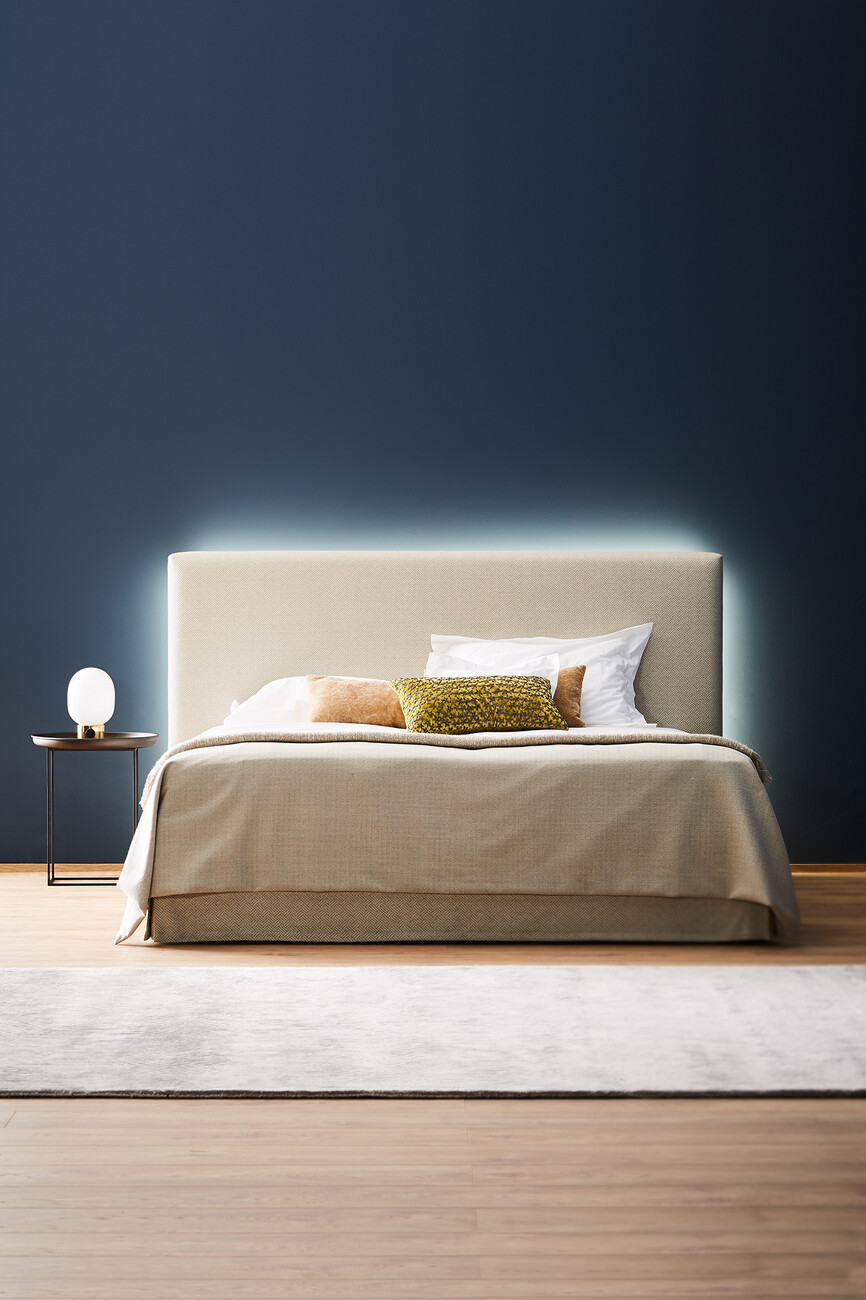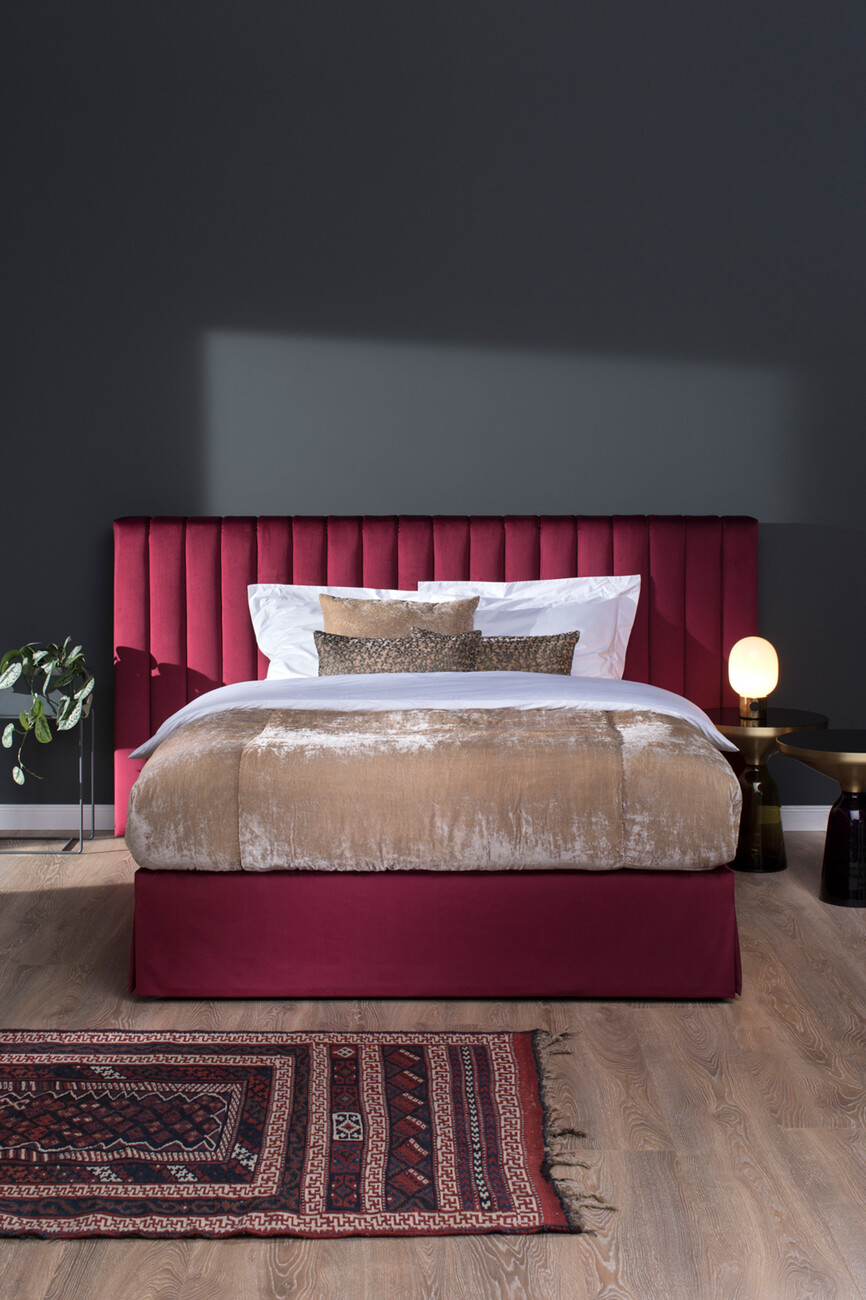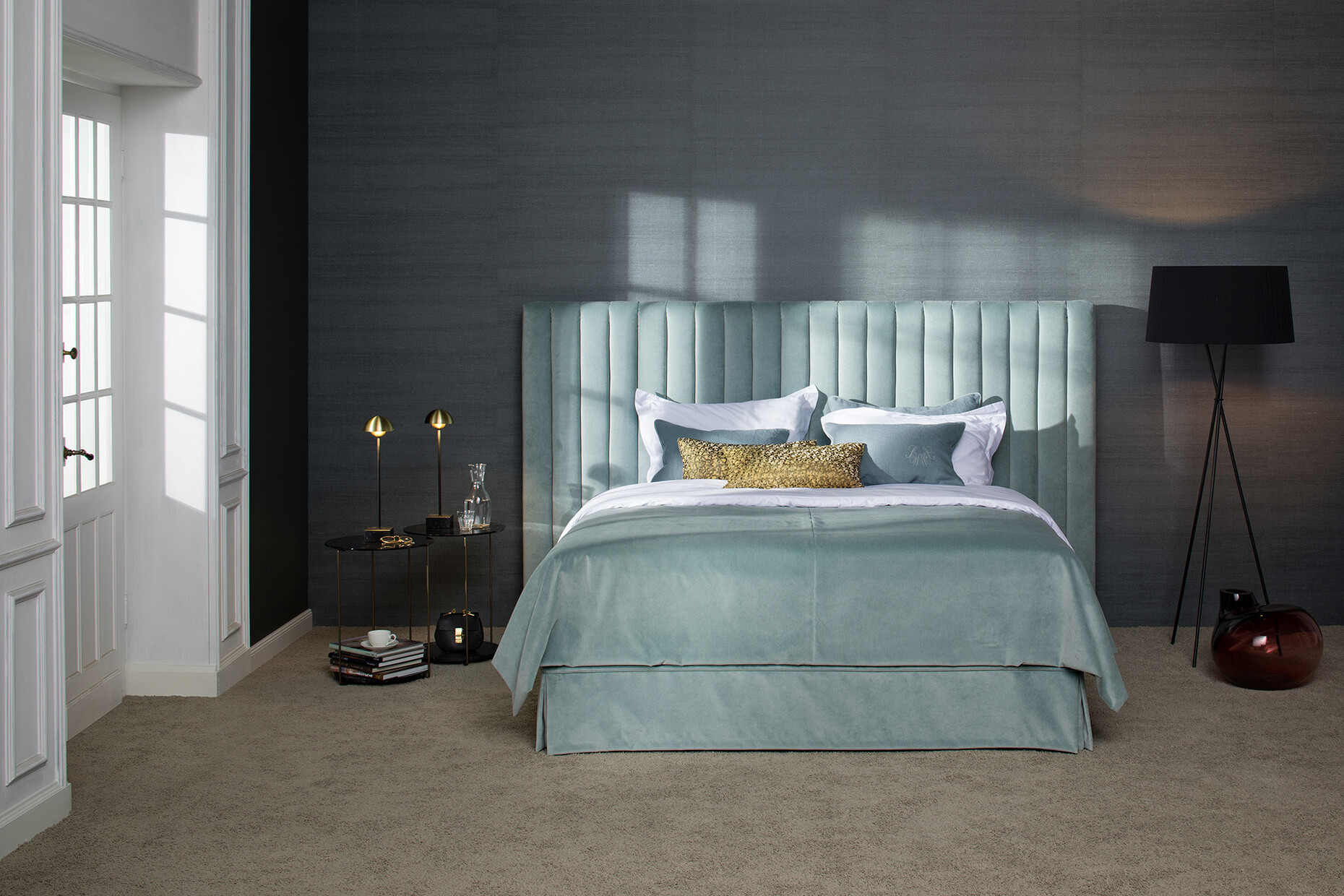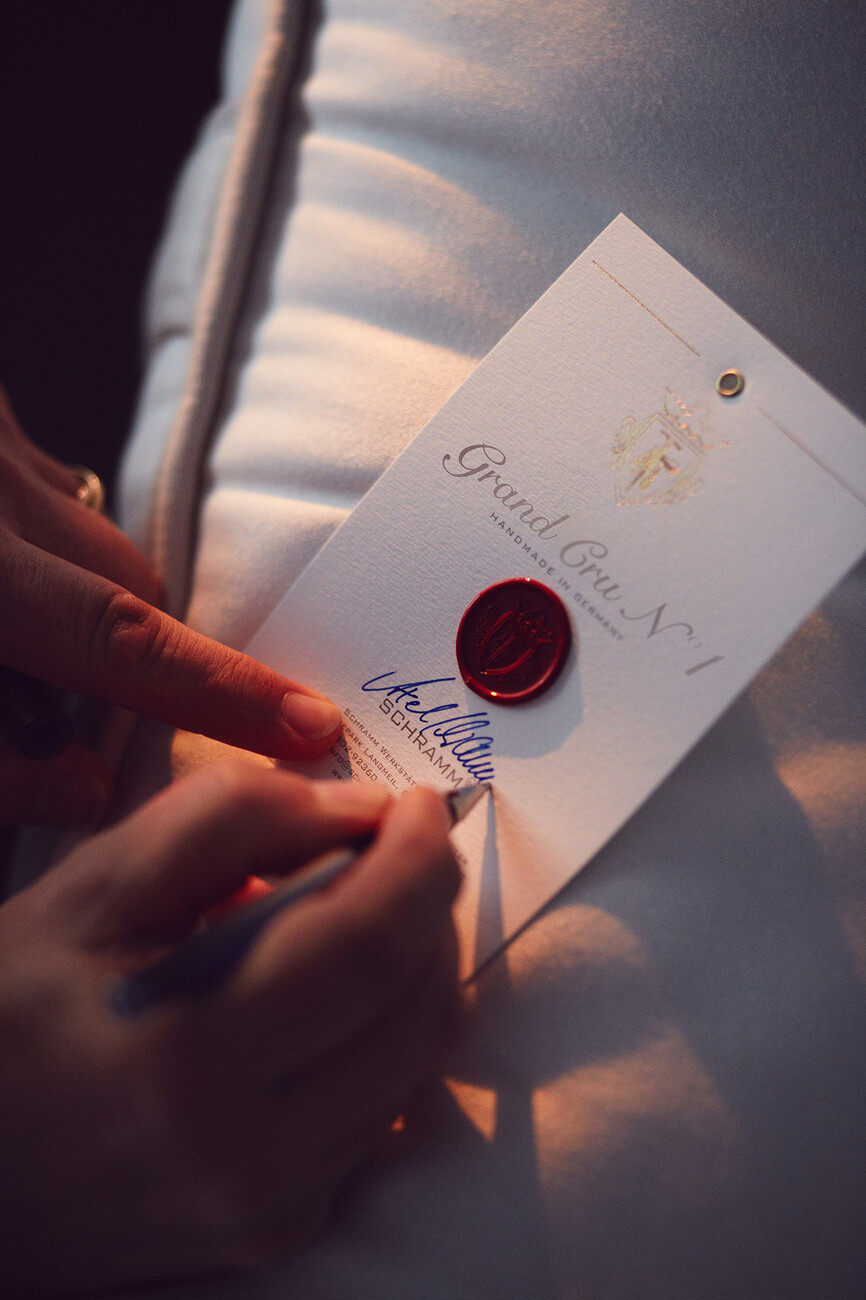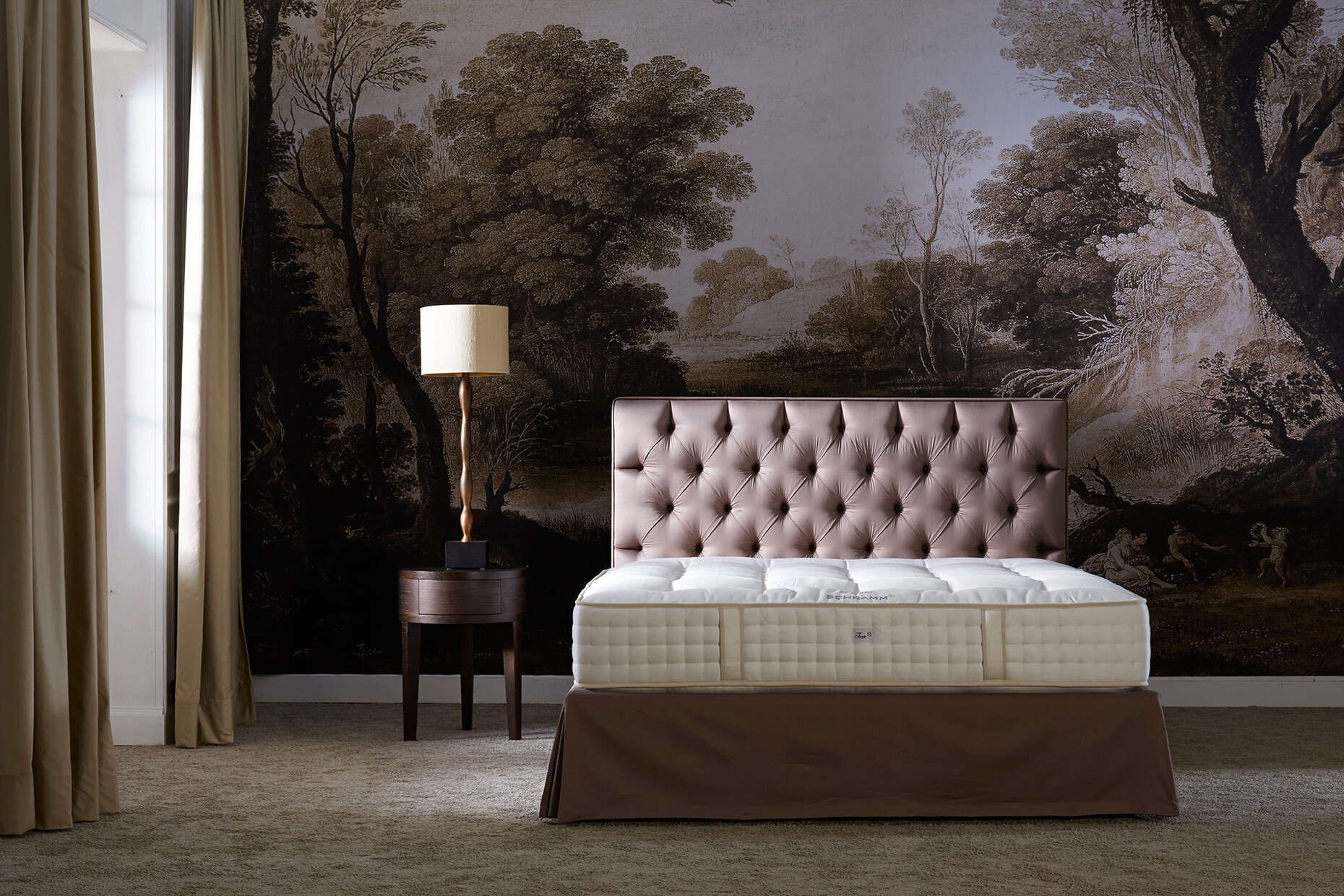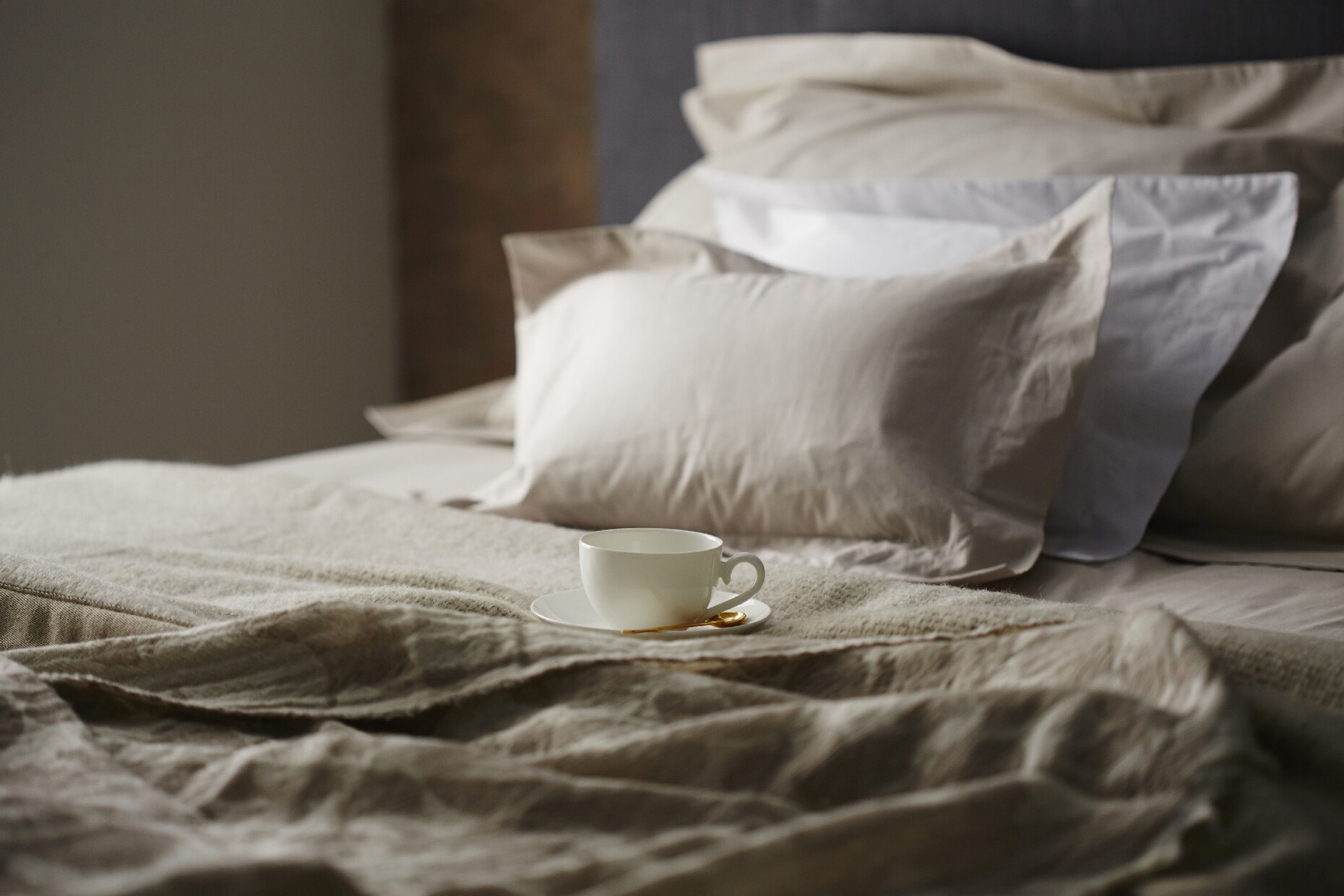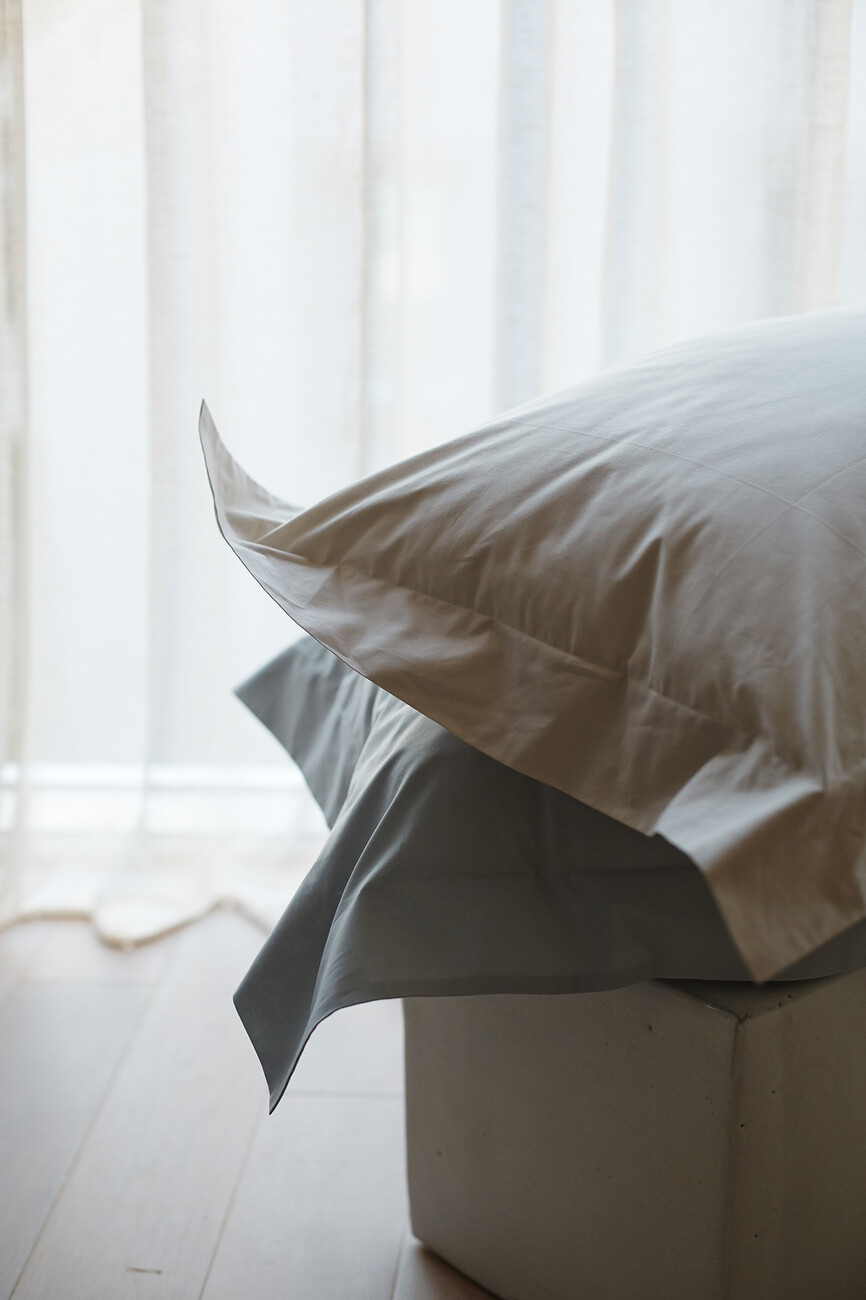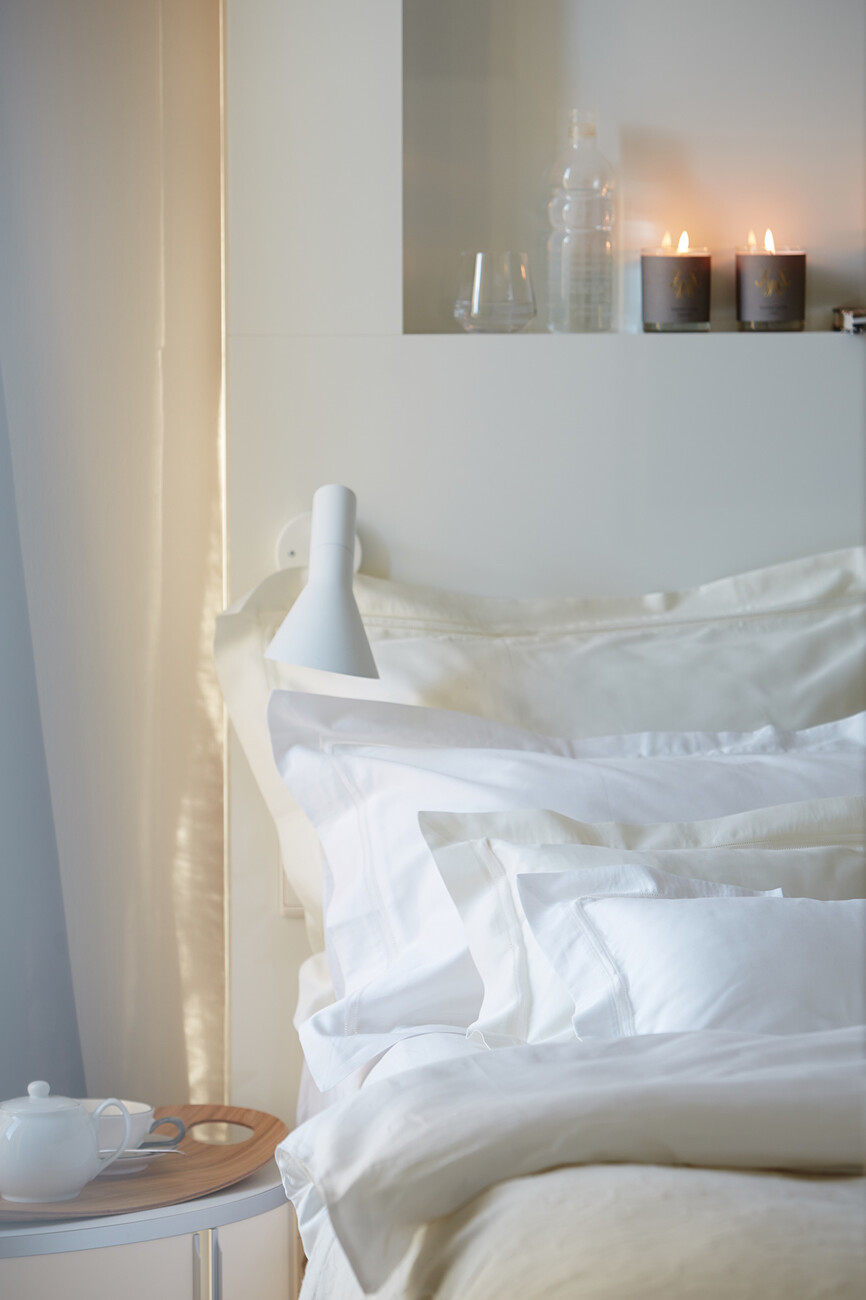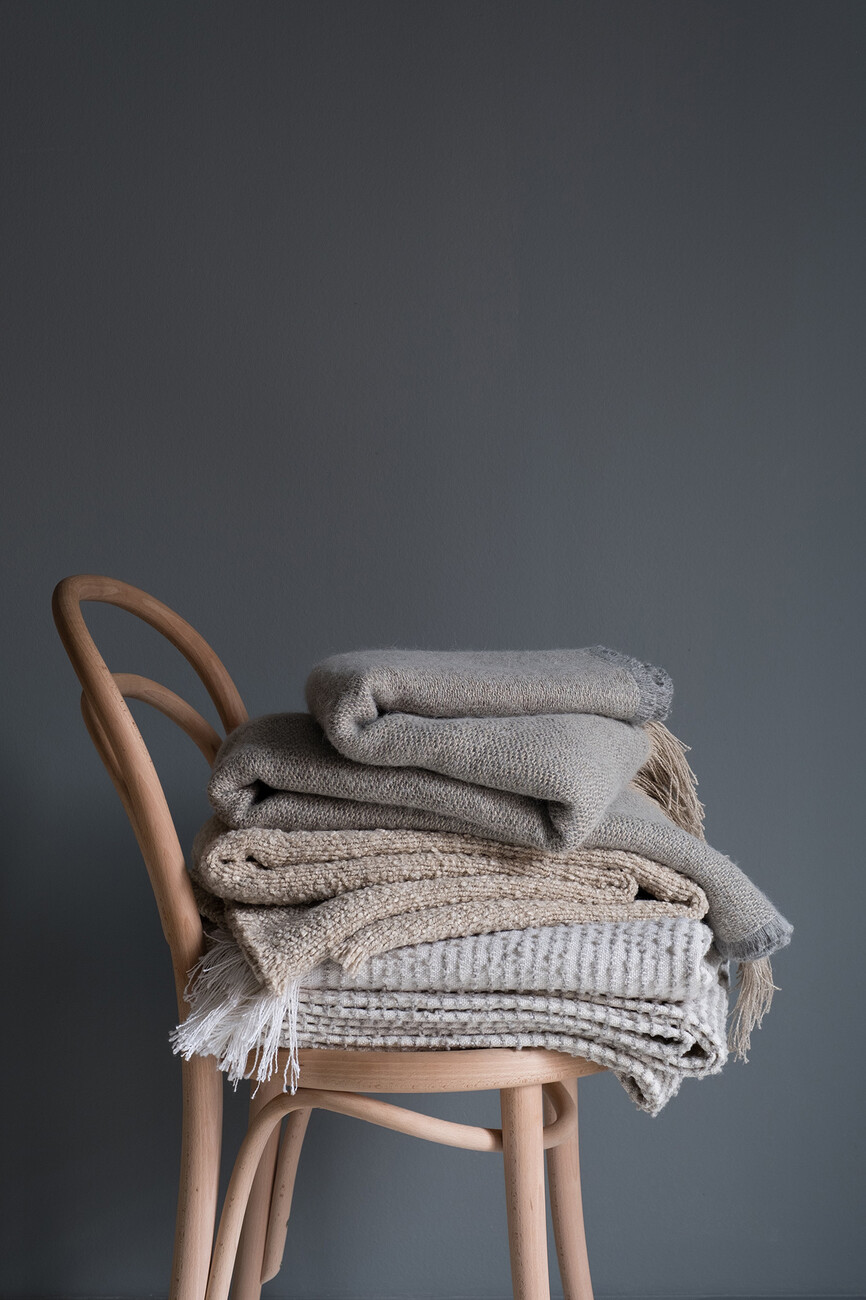The sleep workshop
Winnweiler – an idyllic spot in the Rhineland Palatinate. In May 2019 Axel Schramm and his wife Angela extended an invitation for us to have a closer look at their workshops here. What we soon realized was that the couple, who have turned the family-run company into Germany’s leading manufacturer of premium beds, are also fantastic hosts. The Schramms’ enthusiasm for their product is infectious. And maybe it also partially the fantastic wines and specialties from the region that make the stay in Winnweiler an unforgettable experience.
Back in 1923 Karl Schramm opened his small saddlery in the village of Alsenborn. In the course of his working life he developed a keen feel for the anatomy of both humans and horses. After all, each saddle needed to be made to measure to fit the build of steed and rider. Karl eventually used this knowledge and his skilled craftsmanship to develop a mattress that lived up to his standards of comfort and ergonomics. Under the leadership of his son Karl Schramm Jr. the company then switched its entire production over to box-spring beds, which at the time were a real niche product in Germany. Nowadays, a third-generation Schramm, Axel Schramm heads the company – and the fourth generation is already busy learning the ropes.
For many years, box-spring beds were somewhat exotic in German bedrooms. The Treca brand marketed the concept as a French bed with baroque shapes and plenty of velvet, plush and brass. The product unfortunately did not fire the enthusiasm of design aficionados. Schramm on the other hand chose a different approach as early as 30 years ago: “Our design was very pared back from the start, very pure,” comments Angela Schramm, Axel’s wife and the company’s head of marketing. Together with her husband she has in recent years turned the manufactory into a brand that stands for outstanding contemporary design like few other bed manufacturers. Sebastian Herkner, one of the most successful designers on the international stage today, masterminded the design for the “Calm” and “Origins Complete Fold” models. His beds interpret moods such as that sense of being protected and coziness – in the relaxed yet elegant style that has become his trademark. In her prize-winning design “Some Day” for Schramm, Berlin-based designer Hanne Willmann relies on wood and references Scandinavian vibes. The newest addition to the portfolio was authored by Cologne design duo Kaschkasch: “Ell” is a bed reduced to an archetypal shape, which works just as well in traditional bedrooms as it does in avant-garde environments.
Herkner & Co. have also given Angela Schramm, who designed several beds herself, a new perspective. “My own style changed in conversation with the young designers,” she relates. What hasn’t changed, however, is the effort Schramm puts into manufacturing its products. “18 pairs of hands,” Angela Schramm explains, work on each and every mattress before it leaves the factory premises. With its 185 employees, the company makes close to 10,000 mattresses and about half as many beds per year.
A stand-alone feature is the thermic tempering of the springs in an oven. Schramm is the last company to carry out this elaborate process: After being wound, each spring is carefully heated to close to 300°C and then carefully cooled again afterwards. This makes them extremely stable and elastic in the long term and the mattress doesn’t develop the notorious “dent” that indicates where the user’s body always lies. After the springs have been hardened, they are individually stitched into little cotton bags by hand. Angela Schramm describes the seamstresses who conscientiously carry out this work as the “muscle at the heart of the company”. The sewn-in springs form the core of each mattress and of each Schramm bed. Depending on the product the different degrees of hardness are assembled according to various “recipes” before being encased with several layers of fabric and padding.
Committed to innovation
Schramm does not, however, just stand for a crafts tradition. The manufactory continuously advances its products in order to achieve an ever greater degree of comfort while sleeping. In 2003, for example Schramm introduced its now patented “Secondary Contour Adaption” (SCA), which allows for the sub-mattress to be lowered or raised by 2 centimeters in the shoulder and hip areas. This is achieved by a motorized mechanism. In 2011 Schramm presented the likewise patented three-mattress-system “Grand Cru” and in 2014 celebrated the premiere of “Two in One”, a one-piece mattress for double beds that can be folded in the middle for transport.
Schramm is without question profiting for the current box-spring boom in Germany. The company has grown considerably in the last 15 years. It started off by many buyers coming across box-spring beds in the USA and growing to appreciate it, Angela Schramm says. On their return they then wanted such a bed at home, too. In the mean-time the box-spring bed has become widespread in Germany as well, in the wake of beds with a slatted frame, which were the default here for many years. Angela Schramm talks of a downright hype that she has been observing for some years now. That said, the company does not rely on German customers alone. Schramm has long since begun conquering foreign markets. Alongside focusing on Germany’s European neighbors, the company’s sights are firmly set on the Asian countries. Schramm is not interested in the US: According to American laws, mattresses sold there have to be “fire retardant” – a characteristic that can only be achieved by inputting an enormous amount of chemicals. For the company committed to using high-quality natural materials, that’s simply not on option.
That said, the company is more excited about the realm of “hospitality”: “Even in the five-star segment, many hotels skimp when it comes to the mattress,” Angela Schramm laments. Some simply lack an awareness of the fact that a high-quality bed is an important part of a first-class stay, she suggests. In addition, existing mattresses often get handled in the wrong way, for example when it comes to turning them over regularly, she adds. In the form of its “Savoy” program the manufactory sells mattresses developed especially for use in top-end hotels. Schramm beds are now being slept on in first-rate locations such as the Fontenay in Hamburg or Schloss Elmau. At the same time, personnel are being trained to look after the mattresses properly. Hotel beds are the best advertisement for the company: After experiencing a quite unprecedented level of sleeping comfort, guests swiftly realize they definitely don’t want to miss out on such joys once they get home.











